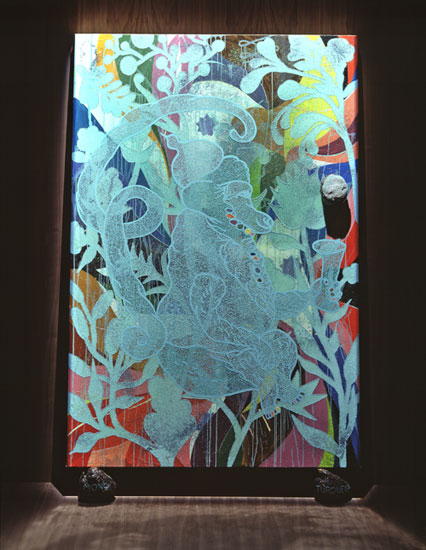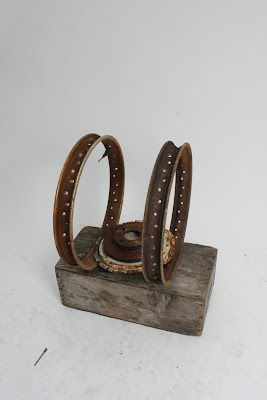Chris Ofili
Mono Turquesa 1999-2002
© Courtesy Chris Ofili - Afroco and Victoria Miro Gallery. Photo: Dave Lambert, Rod Tidnam
Oil, acrylic, glitter, graphite, fibre tip pen, elephant dung, polyester resin and map pins on canvas
1832 x 1228 mm support: 2442 x 1830 mm
Chris Ofili
Mono Rosa 1999-2002
© Courtesy Chris Ofili - Afroco and Victoria Miro Gallery. Photo: Dave Lambert, Rod Tidnam
Oil, acrylic, glitter, graphite, fibre tip pen, elephant dung, polyester resin and map pins on canvas
1832 x 1228 mm support: 2442 x 1830 mm
Chris Ofili
Mono Oro 1999-2002© Courtesy Chris Ofili - Afroco and Victoria Miro Gallery. Photo: Dave Lambert,
Rod Tidnam
1832 x 1228 mm, support: 2442 x 1830 mm

















